A restriction enzyme,restriction endonuclease,REase,ENase orrestrictase is an enzyme that cleaves DNA into fragments at or near specific recognition sites within molecules known as restriction sites. Restriction enzymes are one class of the broader endonuclease group of enzymes. Restriction enzymes are commonly classified into five types,which differ in their structure and whether they cut their DNA substrate at their recognition site,or if the recognition and cleavage sites are separate from one another. To cut DNA,all restriction enzymes make two incisions,once through each sugar-phosphate backbone of the DNA double helix.

A nuclease is an enzyme capable of cleaving the phosphodiester bonds between nucleotides of nucleic acids. Nucleases variously effect single and double stranded breaks in their target molecules. In living organisms,they are essential machinery for many aspects of DNA repair. Defects in certain nucleases can cause genetic instability or immunodeficiency. Nucleases are also extensively used in molecular cloning.
In molecular biology,endonucleases are enzymes that cleave the phosphodiester bond within a polynucleotide chain. Some,such as deoxyribonuclease I,cut DNA relatively nonspecifically,while many,typically called restriction endonucleases or restriction enzymes,cleave only at very specific nucleotide sequences. Endonucleases differ from exonucleases,which cleave the ends of recognition sequences instead of the middle (endo) portion. Some enzymes known as "exo-endonucleases",however,are not limited to either nuclease function,displaying qualities that are both endo- and exo-like. Evidence suggests that endonuclease activity experiences a lag compared to exonuclease activity.
Marlene Belfort is an American biochemist known for her research on the factors that interrupt genes and proteins. She is a fellow of the American Academy of Arts and Sciences and has been admitted to the United States National Academy of Sciences.
UvrABC endonuclease is a multienzyme complex in bacteria involved in DNA repair by nucleotide excision repair,and it is,therefore,sometimes called an excinuclease. This UvrABC repair process,sometimes called the short-patch process,involves the removal of twelve nucleotides where a genetic mutation has occurred followed by a DNA polymerase,replacing these aberrant nucleotides with the correct nucleotides and completing the DNA repair. The subunits for this enzyme are encoded in the uvrA,uvrB,and uvrC genes. This enzyme complex is able to repair many different types of damage,including cyclobutyl dimer formation.
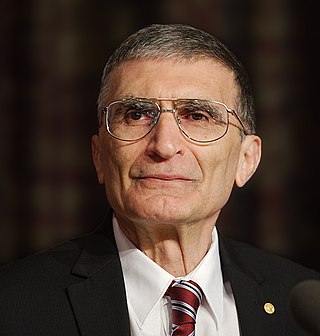
Aziz Sancar is a Turkish molecular biologist specializing in DNA repair,cell cycle checkpoints,and circadian clock. In 2015,he was awarded the Nobel Prize in Chemistry along with Tomas Lindahl and Paul L. Modrich for their mechanistic studies of DNA repair. He has made contributions on photolyase and nucleotide excision repair in bacteria that have changed his field.

DNA adenine methylase,(Dam methylase) (also site-specific DNA-methyltransferase (adenine-specific),EC 2.1.1.72,modification methylase,restriction-modification system) is an enzyme that adds a methyl group to the adenine of the sequence 5'-GATC-3' in newly synthesized DNA. Immediately after DNA synthesis,the daughter strand remains unmethylated for a short time. It is an orphan methyltransferase that is not part of a restriction-modification system and regulates gene expression. This enzyme catalyses the following chemical reaction

Paul Lawrence Modrich is an American biochemist,James B. Duke Professor of Biochemistry at Duke University and Investigator at the Howard Hughes Medical Institute. He is known for his research on DNA mismatch repair. Modrich received the Nobel Prize in Chemistry 2015,jointly with Aziz Sancar and Tomas Lindahl.
Deoxyribonuclease IV (phage-T4-induced) is catalyzes the degradation nucleotides in DsDNA by attacking the 5'-terminal end.
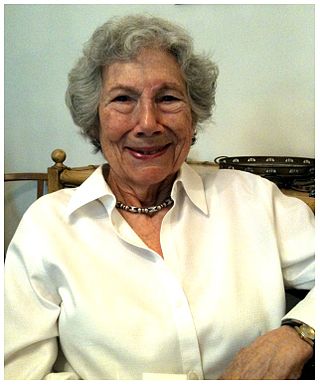
Evelyn M. Witkin is an American geneticist who was awarded the National Medal of Science for her work on DNA mutagenesis and DNA repair.

DNA-(apurinic or apyrimidinic site) lyase is an enzyme that in humans is encoded by the APEX1 gene.
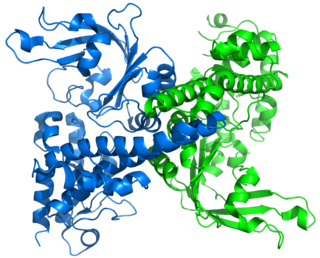
Restriction endonuclease (REase) EcoRII is an enzyme of restriction modification system (RM) naturally found in Escherichia coli,a Gram-negative bacteria. Its molecular mass is 45.2 kDa,being composed of 402 amino acids.

Very short patch (VSP) repair is a DNA repair system that removes GT mismatches created by the deamination of 5-methylcytosine to thymine. This system exists because the glycosylases which normally target deaminated bases cannot target thymine.

The FPG IleRS zinc finger domain represents a zinc finger domain found at the C-terminal in both DNA glycosylase/AP lyase enzymes and in isoleucyl tRNA synthetase. In these two types of enzymes,the C-terminal domain forms a zinc finger.
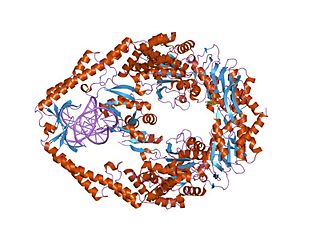
MutS is a mismatch DNA repair protein,originally described in Escherichia coli.
Deoxyribonuclease (pyrimidine dimer) (EC 3.1.25.1,endodeoxyribonuclease (pyrimidine dimer),bacteriophage T4 endodeoxyribonuclease V,T4 endonuclease V) is an enzyme. This enzyme catalyses the following chemical reaction:
Double-stranded uracil-DNA glycosylase is an enzyme with systematic name uracil-double-stranded DNA deoxyribohydrolase (uracil-releasing). This enzyme catalyses a specific chemical reaction:it hydrolyses mismatched double-stranded DNA and polynucleotides,releasing free uracil.

Daisy Roulland-Dussoix was a Swiss molecular microbiologist. She was one of the discoverers of restriction enzymes during her doctoral studies. There is controversy over whether she should have received the 1978 Nobel prize in Physiology and Medicine,which was awarded to Hamilton O. Smith,Daniel Nathans,and Werner Arber.
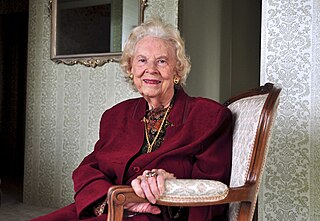
Thelma Finlayson was a Canadian entomologist. She was one of the first female scientists to work at a federal government's research branch and was Simon Fraser University's first professor emerita upon her retirement in 1979.
Sylvy Kornberg née Sylvia Ruth Levy (1917–1986) was an American biochemist who carried out research on DNA replication and polyphosphate synthesis. She discovered and characterized polyphosphate kinase (PPK),an enzyme that helps build long chains of phosphate groups called polyphosphate (PolyP) that play a variety of metabolic and regulatory functions. She worked closely with her husband and research partner,Arthur Kornberg,contributing greatly to the characterization of DNA polymerization that earned him the 1959 Nobel Prize in Physiology or Medicine.












